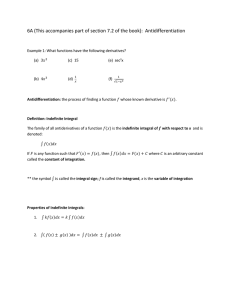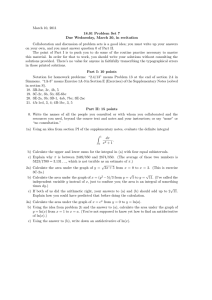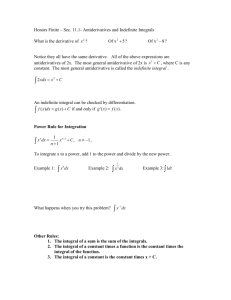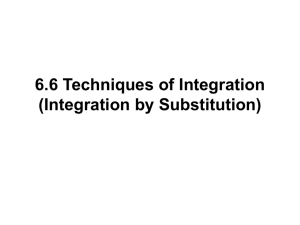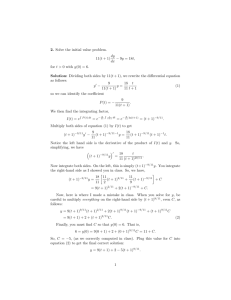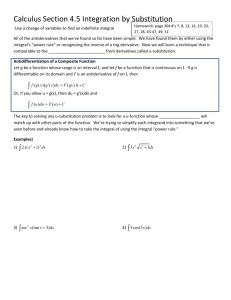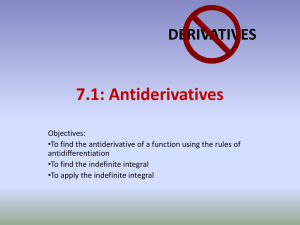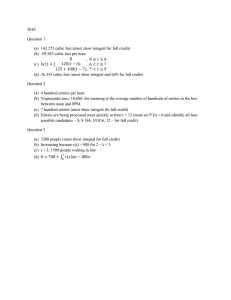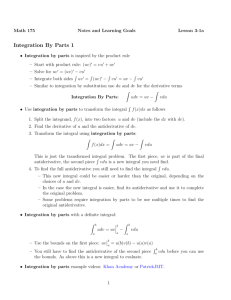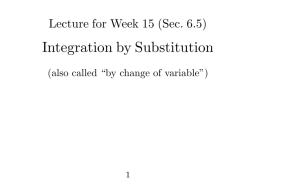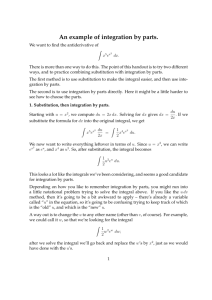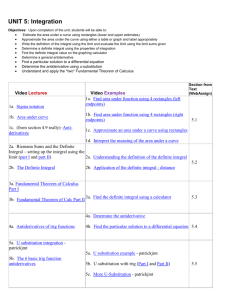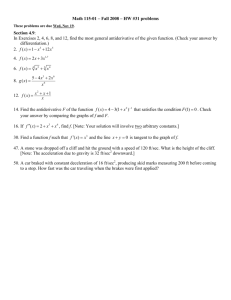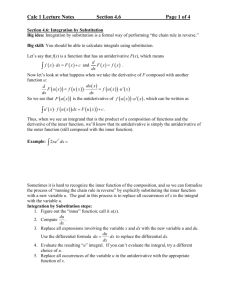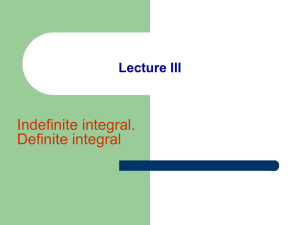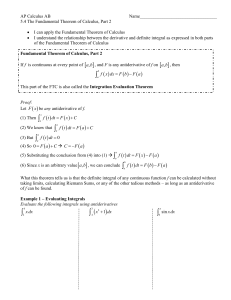Integrate by parts
advertisement
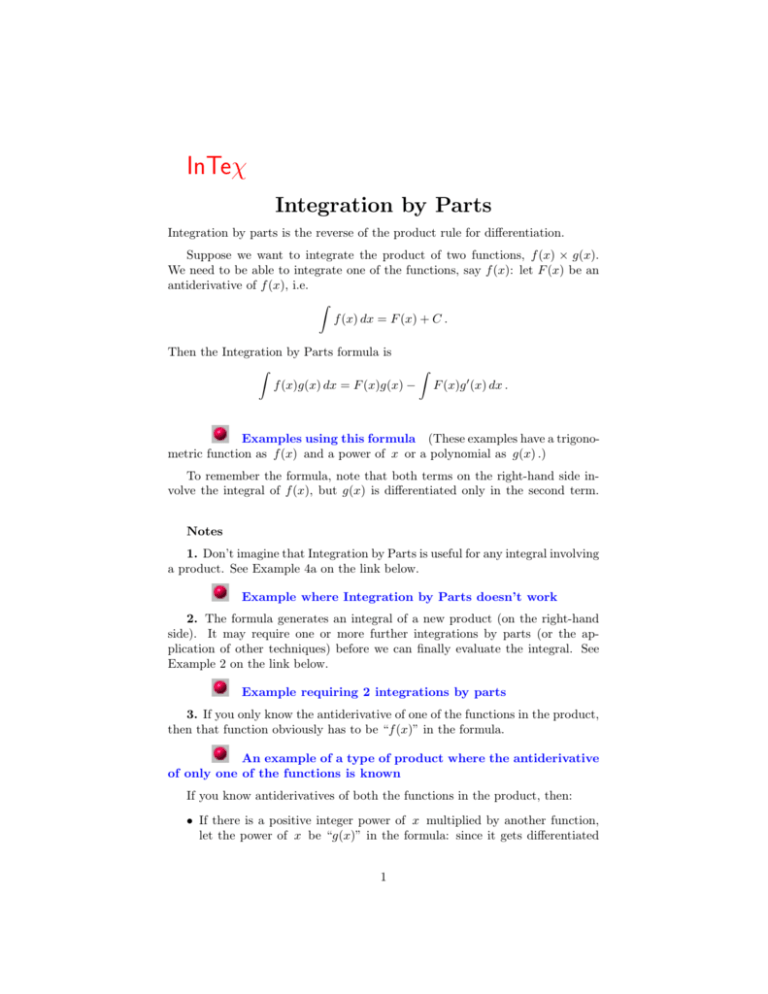
InTeχ Integration by Parts Integration by parts is the reverse of the product rule for differentiation. Suppose we want to integrate the product of two functions, f (x) × g(x). We need to be able to integrate one of the functions, say f (x): let F (x) be an antiderivative of f (x), i.e. Z f (x) dx = F (x) + C . Then the Integration by Parts formula is Z Z f (x)g(x) dx = F (x)g(x) − F (x)g 0 (x) dx . Examples using this formula (These examples have a trigonometric function as f (x) and a power of x or a polynomial as g(x) .) To remember the formula, note that both terms on the right-hand side involve the integral of f (x), but g(x) is differentiated only in the second term. Notes 1. Don’t imagine that Integration by Parts is useful for any integral involving a product. See Example 4a on the link below. Example where Integration by Parts doesn’t work 2. The formula generates an integral of a new product (on the right-hand side). It may require one or more further integrations by parts (or the application of other techniques) before we can finally evaluate the integral. See Example 2 on the link below. Example requiring 2 integrations by parts 3. If you only know the antiderivative of one of the functions in the product, then that function obviously has to be “f (x)” in the formula. An example of a type of product where the antiderivative of only one of the functions is known If you know antiderivatives of both the functions in the product, then: • If there is a positive integer power of x multiplied by another function, let the power of x be “g(x)” in the formula: since it gets differentiated 1 in the integral on the right-hand side of the formula, the n’th power of x will become a constant after n integrations by parts. A type of product of a positive integer power with another function which can be antidifferentiated • In other cases, it usually doesn’t matter which of the functions in the product you choose as “f (x)” and which as “g(x)”. A type of product where it doesn’t matter which of the functions is “f (x)” and which is “g(x)” 4. Sometimes Integration by Parts works for integrals that don’t look like products at all: suppose we want to integrate g(x), but we only know how to differentiate g(x). Then let f (x) = 1, so g(x) = f (x).g(x), and use the Integration by Parts formula. How to integrate g(x) = ln x , a function which we only know how to differentiate 5. Most textbooks write the Integration by Parts formula in the form Z Z dv du u dx = uv − v dx . dx dx If you are already familiar with using it in this form, there is no need to learn the form given earlier. Return to “About InTeχ” Click here to email the InTeχ site manager with any comments, queries or suggestions for improvements to this site, to notify any links that don’t work or any other technical faults, or to obtain further help with learning integration techniques. 2
